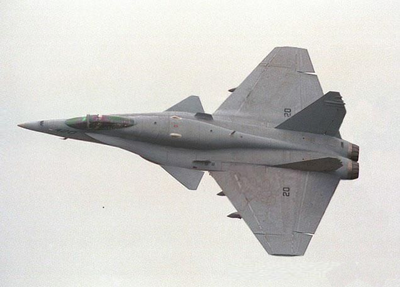K-26: Difference between revisions
No edit summary |
No edit summary |
||
| Line 20: | Line 20: | ||
==Background== | ==Background== | ||
Although experiences in the Flynnvakian-Baxtonian War had shown Kalaronian Military Analysists that the Light Fighter as a concept was becoming less capable against more heavily armed, faster, and better equipped aircraft; there was relatively little interest in the ITF-aligned nations for the more expensive airframes required, or for the heavier development fees. Meanwhile, the USCS (the primary counterpart to the ITF) maintained consistent orders for the treaty-protected K.17, a larger Strike Fighter designed around a heavy airframe and the powerful QWS-110 Engines, since the start of the decade. | |||
This restriction was harmlessly ignored for years, as the lack of international interest in the concept, as well as then peaceful relations with the USCS, disincentivized the production of a wholly separate Aircraft. However | |||
==Development== | ==Development== | ||
Revision as of 06:06, 23 February 2021
| K-26 | |
|---|---|
 An airborne K-26A | |
| General information | |
| Type | Fighter |
| Status | Active |
| History | |
| Manufactured | 1996-Present |
| Introduction date | 1998 |
Background
Although experiences in the Flynnvakian-Baxtonian War had shown Kalaronian Military Analysists that the Light Fighter as a concept was becoming less capable against more heavily armed, faster, and better equipped aircraft; there was relatively little interest in the ITF-aligned nations for the more expensive airframes required, or for the heavier development fees. Meanwhile, the USCS (the primary counterpart to the ITF) maintained consistent orders for the treaty-protected K.17, a larger Strike Fighter designed around a heavy airframe and the powerful QWS-110 Engines, since the start of the decade.
This restriction was harmlessly ignored for years, as the lack of international interest in the concept, as well as then peaceful relations with the USCS, disincentivized the production of a wholly separate Aircraft. However
Development
Design
Operational history
Early service
Anti-bomber operations
Post-war service
Variants
The prototype flown in the 1939 fighter competition was designated Chikai WH 25, with WH indicating wŏnhyŏng (prototype). Six were built. Its armament consisted of four 7.5mm machine guns: two above the nose, and one in each wing. Each gun was fed from a 500-round belt.
Type 40-I
Type 40-II
Type 40-III
Type 40-IV
Type 40-V
Specifications (Type 40-I)
General Characteristics
- Crew:
- Length:
- Wingspan:
- Height:
- Wing Area:
- Empty Weight:
- Loaded Weight:
- Powerplant:
Performance
- Maximum Speed:
- Range:
- Service Ceiling:
- Rate of Climb:
- Wing Loading:
- Power-to-Mass ratio:
Armament
- Guns:
- 2x forward-firing
- 2x forward-firing
- Bombs: